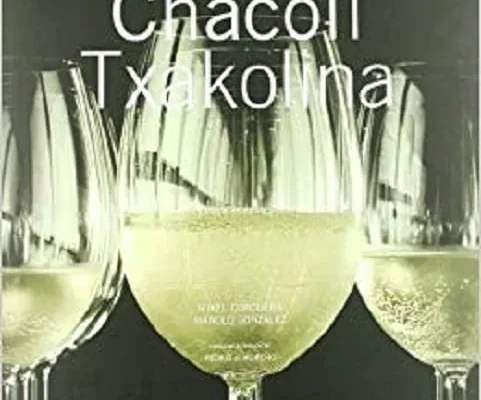President Donald Trump’s trade policies have significantly impacted the wine industry, domestically and internationally. In early 2025, he imposed a 10 percent tariff on all energy imports from Canada, which led Canadian Prime Minister Justin Trudeau to retaliate with 25 percent tariffs on approximately $20.7 billion worth of U.S. goods, including American beer, wine, and bourbon. Here’s a refined summary tailored for Sommelier Magazine:
The Mar-a-Lago Accord
The Trump administration’s proposed 200 percent tariff on European wines and spirits is a high-stakes move to pressure the European Union into trade concessions but has sent ripples through the wine industry. While the goal is to promote domestic wine sales, the policy has resulted in higher costs, disrupted supply chains, and shrinking margins for importers, distributors, and retailers.
Retaliatory measures are also hitting American producers hard. Canada’s tariffs on U.S. wines have led to the removal of American bottles from Canadian shelves, dealing a major blow to wine-producing states like Oregon and California, which depend on exports.
As global trade tensions escalate, the wine industry faces mounting uncertainty. Sommeliers, distributors, and restaurateurs must navigate rising costs, less European availability, and shifting consumer preferences, making adaptation crucial in the evolving market.
Ripple Effects
The tariffs have created a complex landscape for the wine industry, increasing production costs and challenging international partnerships. Domestic wineries have struggled to fill the gap left by reduced exports, as wines from different regions are not easily interchangeable.
Labor Shortages
Stricter immigration policies have exacerbated labor shortages in vineyards. States like California, which produce 80 percent of U.S. wine, rely heavily on immigrant workers for harvesting. The H-2A visa program has been suggested as a solution, but its restrictive requirements make it challenging for smaller wineries to adopt.
Sustainability and Technology
Advancements in renewable energy and AI present opportunities for wineries to adopt sustainable practices, such as solar energy and battery storage, to reduce costs and environmental impact. Government programs, like the USDA’s Market Access Program, support sustainable practices in agriculture, including the wine industry. However, the costs of adopting these technologies can be prohibitive for some wineries, especially when combined with challenges from trade policies.
States’ Rights Are Ignored
The U.S. Constitution grants the federal government authority over international trade and foreign policy, which includes the power to impose tariffs. This federal jurisdiction can sometimes override state preferences, especially when national economic interests are at stake. The tariffs and trade policies implemented by President Trump have had significant implications for the wine industry in states like Oregon, California, New York, Texas, Missouri, and Georgia and there are few actions that the states can take to stop or delay their implementation.
Oregon
Oregon’s wine industry, which contributed $8 billion to the state economy in 2022 and employed nearly 40,000 people, has been hit hard by retaliatory tariffs from Canada. Canadian liquor boards have removed U.S. wines from shelves, cutting off a critical export market worth over $1 billion annually for American wines. Local winemakers warn that proposed 200% tariffs on European wines could hurt domestic producers by increasing overall wine prices and disrupting global trade relationships.
California
As the largest wine-producing state in the U.S., California faces mixed outcomes. Some see potential for increased domestic sales due to higher prices on European imports. However, others fear destabilization of an already fragile industry grappling with challenges like wildfires and droughts. California wineries heavily depend on exports to Canada, which have been severely disrupted by retaliatory measures, causing financial strain on small producers. Importers and distributors in California also rely on European wines, and a 200 percent tariff would significantly raise costs, affecting the broader supply chain.
New York
New York’s wine industry, especially regions like the Finger Lakes, is facing growing pressures amidst escalating trade tensions and proposed tariffs. Export challenges to Canada have intensified as provinces such as Ontario and Quebec remove U.S.-produced alcohol, directly impacting wineries. Compounding concerns, the potential drop in Canadian tourism could dent wine region sales during peak seasons.
While some anticipate a boost in domestic sales as European wine prices rise, the overall industry outlook remains uncertain. New York’s regulated three-tier distribution system complicates tariff-related pricing adjustments, adding strain for distributors and retailers. Efforts to stock more New York wines are emerging but may not compensate for potential losses from European imports. Advocacy by the New York State Liquor Store Association seeks to shield the industry from adverse trade policies.
Texas
In Texas, local wine shops report that while domestic sales might see a short-term boost, overall wine sales are expected to decline due to higher prices and reduced product variety caused by tariffs. The state’s wine retailers are bracing for economic difficulties as European imports become prohibitively expensive.
Missouri and Georgia
While specific data on Missouri and Georgia is limited, both states are part of the broader U.S. wine market affected by these policies. Retailers and distributors in these regions are likely experiencing similar challenges related to increased costs of imported wines and retaliatory tariffs impacting exports.
Tariffs Shake Up U.S. Wine Industry
A proposed 200 percent tariff on European wines threatens to drive up prices and disrupt supply chains, forcing many importers to halt purchases. Retaliatory tariffs from Canada and the EU are further straining the U.S. wine sector, cutting exports and destabilizing jobs.
While some domestic wineries may benefit from reduced competition, the broader impact is higher consumer costs, restricted market access, and fragile trade relationships. As tensions escalate, the industry faces mounting uncertainty, highlighting its vulnerability to shifting trade policies.





